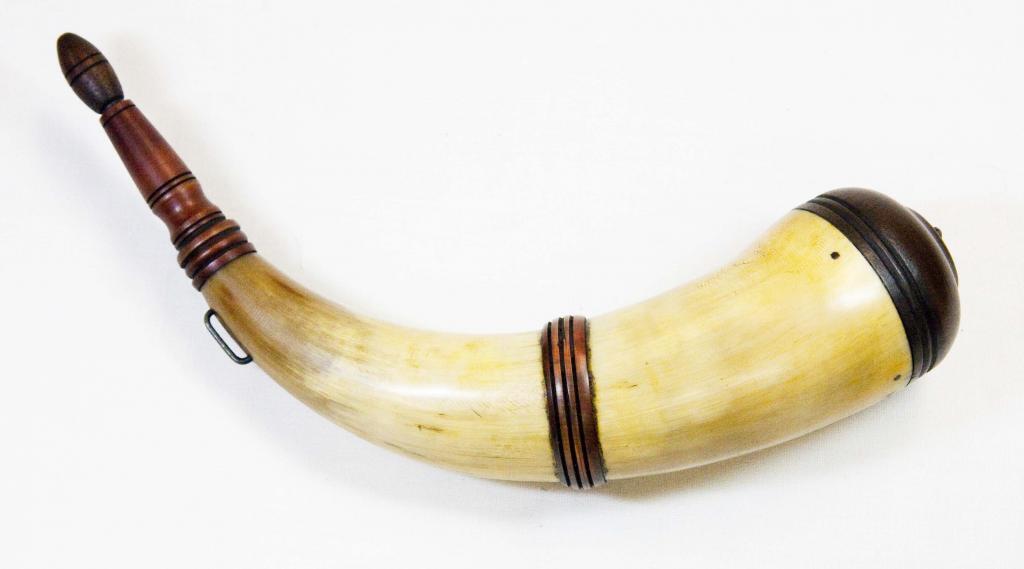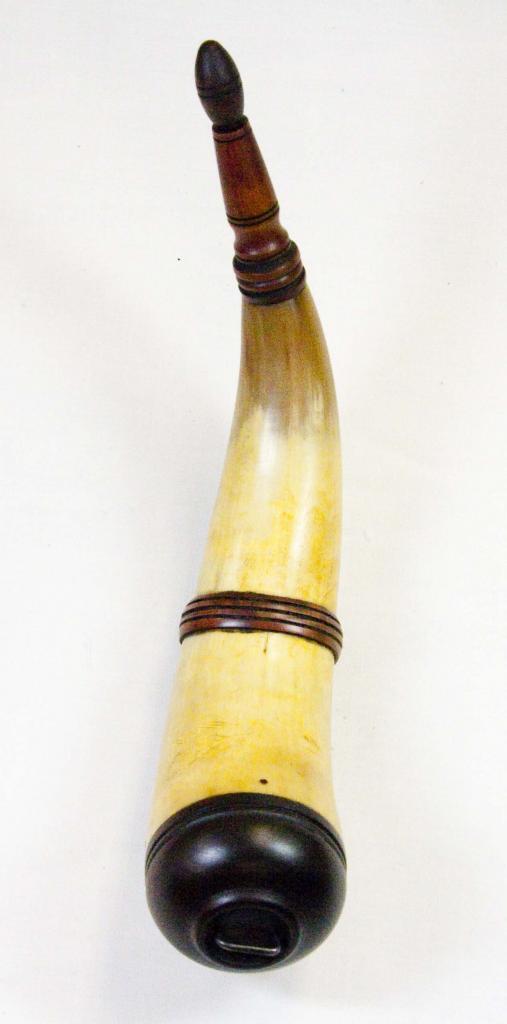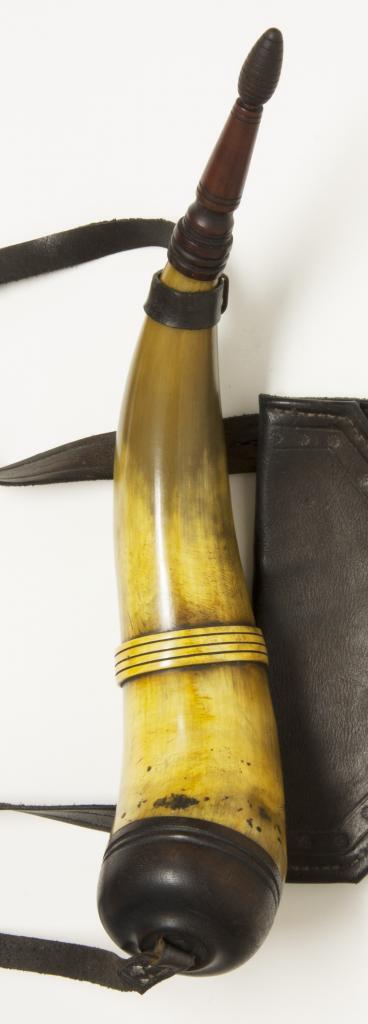Applied tip powder horns, as the name implies, have turned horn, antler, or bone tips that either screw onto or are pinned to the powder horn body. These are professionally made horns that had turned butt plugs as well, and sometimes turned horn bands. Screw-tip powder horns were made as early as the French and Indian War in Philadelphia and spread west into Pennsylvania and south into Virginia and North Carolina. The best supported explanation for the purpose of screw-tip powder horns, as presented by Art DeCamp, is that the turned screw-tips (and other applied tips ) allowed for the mass production of powder horns where each step of the manufacturing process could be handled by one person. Turned horn bands and turned wood base plugs served the same purpose. By turning all these parts, a fancy powder horn could be made quickly by professional horners.
I performed all the steps myself for the screw-tip powder horns displayed below. Each is an example of a Virginia screw-tip powder horn. The single turned band is the defining feature of a Virginia powder horn. The shape of the base plug is characteristic of powder horns from the middle portion of the Valley of Virginia. As with most southern screw-tip powder horns, the screw-tips on the powder horns below have an internal thread. The powder horn bodies have an external thread. Both these horns have turned walnut stoppers. Both screw-tips are dyed to match the base plugs and stoppers The band on Horn #5 below is also dyed horn. The base plug on Horn #5 is maple stained with aqua fortis. The base plug on Horn #6 is walnut. Both powder horns are stained with aqua fortis and aged.
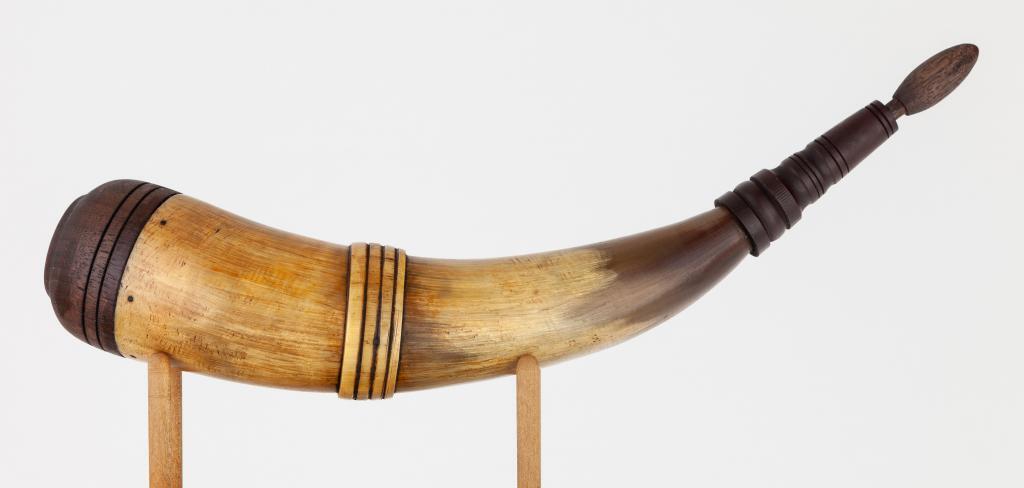
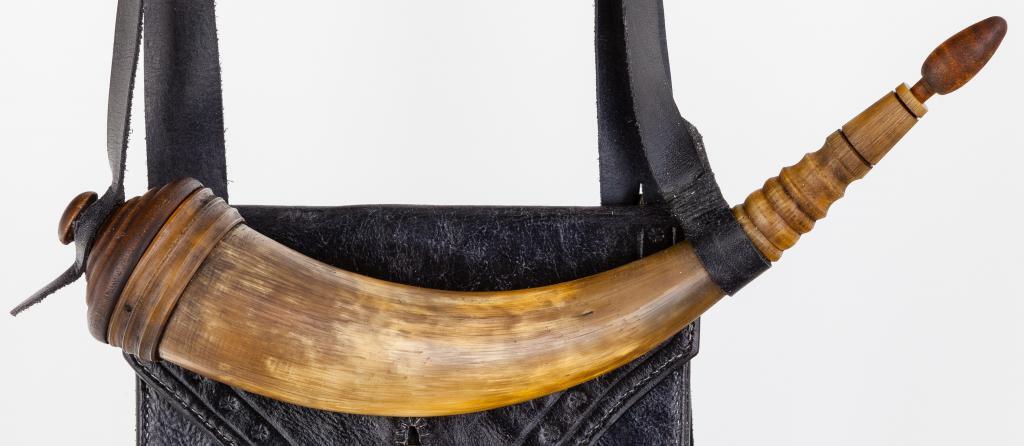
Below is another kind of applied tip powder horn. This one is based on an early Virginia horn documented in Jay Hopkins book;
Bone Tipped & Banded Horns, Vol 1; pp. 138-9. This horn has a pinned turned antler tip. The butt plug and stopper are turned curly maple. The wood, horn, and antler were stained with aqua fortis (iron nitrate). The butt plug and tip were pinned with steel (iron on the original) wire pins.
Right or Left Hand Carry for Powder Horns?
What is right or left hand carry? Simply, it is the side of the body on which a horn is intended to be worn. Historically, a curve of the tip to the left as viewed from the top is a right hand carry horn and also from the right side of the cow. A curve of the tip to the right would historically be a left hand carry horn and from the left side of the cow. If there is no significant curve of the horn as viewed from the top, then the horn can be easily worn on either side with no conflict. Most horns have so little curve it really doesn’t matter much and the modern pattern of carry is frequently opposite of the historical pattern.
Carrying a horn on the same side of the body as it came from the cow results in the tip pointing toward the body and the base pointing away from the body. I also like the base of the horn to point toward the body, as do many modern wearers, so I usually use the opposite side horn and rotate it about 90 degrees so that both the tip and the base of the horn point into the body. This makes a horn from the left side of the cow into a powder horn you can carry on the right side of the body. This is my personal preference, but not generally historically correct. Historically, powder horns were usually carried on the same side of the body as they came from on the cow. If you want to be completely historically correct, you need to understand that.
Sometimes a horn that is technically a left hand horn might wrap around the body better on the right hand side and vice versa. So, in describing a horn, I will tell you whether a horn is historically a left hand or a right hand. Then I will tell you on which side the horn was built to be carried, if it is different. I will also try to include a photo from the top of the horn so you can see the curve for yourself. On which side you actually carry a horn, that is up to you.

